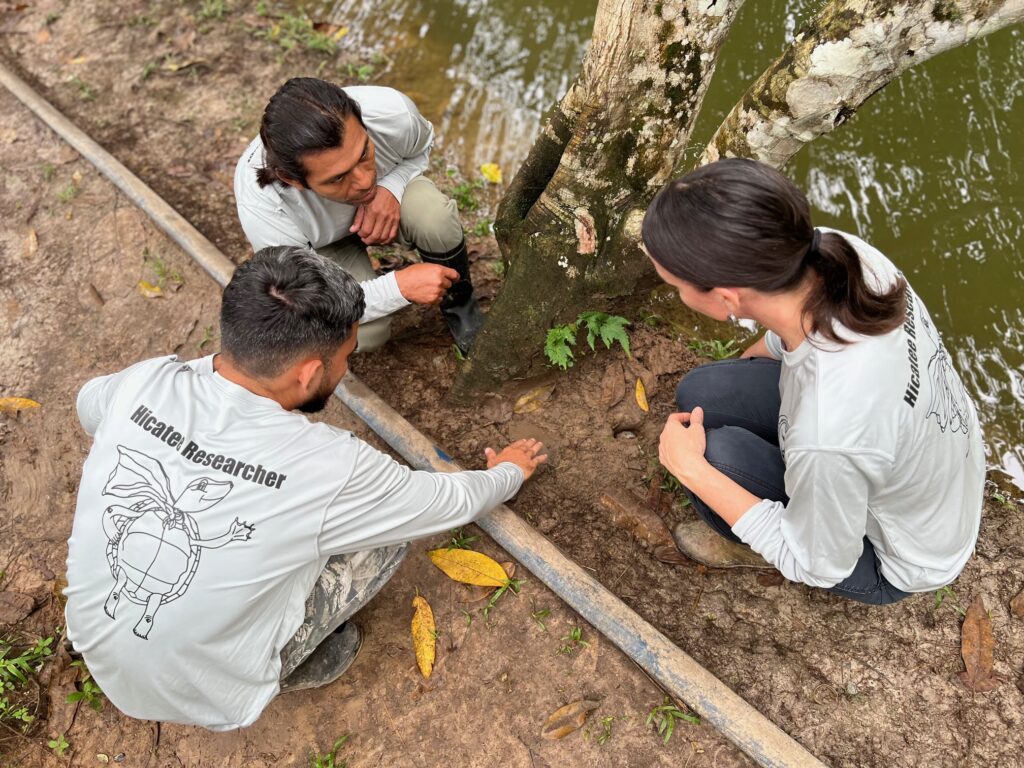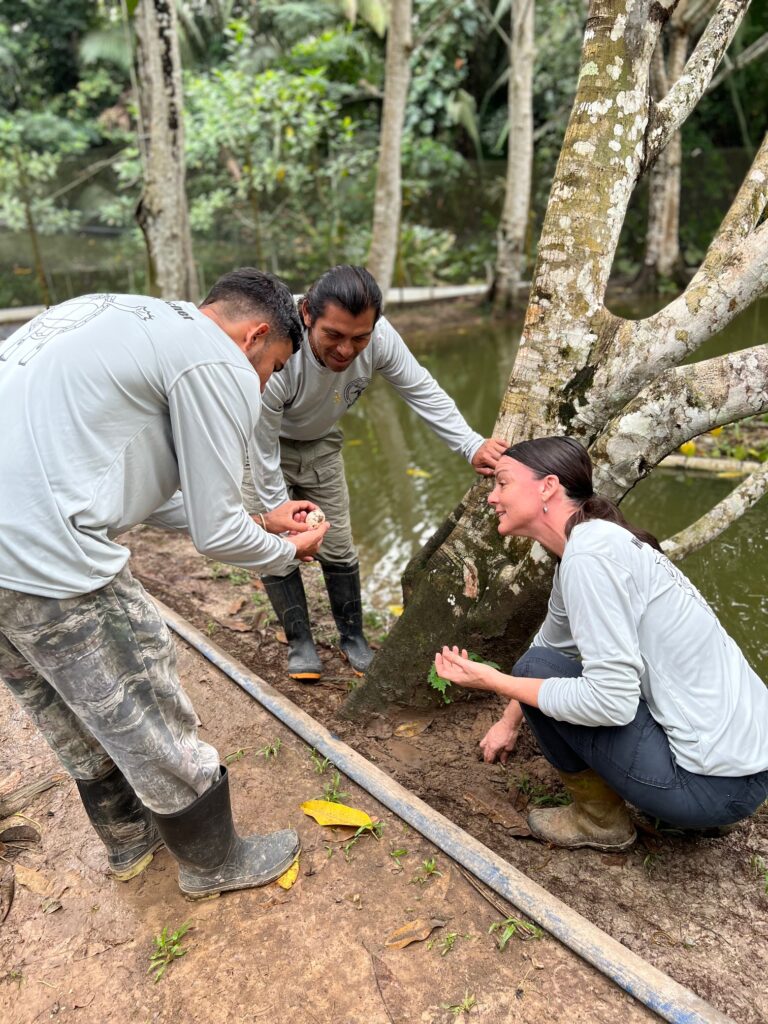This week’s blog feature comes to us courtesy of our friends at the Belize Foundation for Research and Environmental Education! If you want more background on their incredible work with hicatee turtles, read these blog posts as well!

My name is Barney Hall and I am the Wildlife Fellow at BFREE Field Station in southern Belize. I’ve been working with BFREE for a year and a half at the Hicatee Conservation and Research Center (HCRC). The HCRC is a captive breeding facility for the critically endangered Central American River Turtle – locally known as the Hicatee turtle.
The HCRC was established in response to the rapid declines of the Hicatee. The Hicatee is amongst the top 25 most threatened turtles and tortoises in the entire globe. One of the main goals at the HCRC is research to understand the ecology of these prehistoric turtles.
The HCRC has arrived at a milestone of 10 years in operation. The journey has been amazing because there have been both breakthroughs and hardships. Because these turtles are fully aquatic (they only come up for air approximately once every 20 minutes!) and completely herbivorous, there have been challenges in understanding how to create the most natural environment for these turtles to feel comfortable. However, over the years, we have learned to adapt the facility to meet their needs.
One aspect of their lives that is particularly poorly known is the nesting behaviors of these animals. A reptile egg in general usually takes 75 days in incubation before hatching. The Hicatee’s process is truly amazing because the eggs go through a process called embryonic diapause – a pause in development of the egg.
Why might this process take place, one might ask? Great question! The Hicatee lays eggs under water! Yes! Underwater! Not even sea turtles, who spend their whole lives at sea, do that.

In November, the rivers cycles through floods and the Hicatee begin looking for clay materials to nest, and they seem to choose areas where different weeds are flourishing. At the HCRC, we find eggs deposited approximately one foot away from the bank or up to five feet away from natural bank. In our observations the female turtle grips her front limbs into the ground, like a backhoe anchoring herself in the soil, and then uses her hind limbs to start digging a hole an average of 10 inches deep and 8 inches wide. Each Hicatee turtle lays an average of 10 eggs per clutch. Those eggs are carefully covered with soil or clay from the bank and the female turtle returns to the water.
In the months after, the water recedes, and the temperature picks up. The embryonic diapause ends, and development is stimulated. About four months later, turtles begin to pip (using their egg tooth to crack through the eggshell) and hatching ensues.
In 2014, the first clutch of eggs was deposited at the HCRC, and in 2015 seven hatchings emerged. Throughout the years as more female turtles began maturing, more clutches have been deposited. Over the years, Tom Pop (HCRC Manager), myself and previous HCRC Fellows developed different nesting substrates and designs for the captive turtles, but the turtles never once used them.
Finally, in 2022, Tom and I devised a plan to increase the nesting area by inputting more clay material along the pond’s edge. We would then flood the ponds to three feet over the edge in hopes that the Hicatee would feel more comfortable to exit the ponds to nest.
And, finally, success! In the 2023 to 2024 nesting season, a total of 29 clutches of eggs were collected meaning that all 29 adult female Hicatee turtles at the facility had laid one clutch.

This amounted to a record for HCRC – 309 eggs laid and placed in incubation!
Our patience and diligence were rewarded, and we are thrilled. This only shows that it is a slow process of observing and learning how to create changes to meet the requirements for these unique turtles.
We want to thank Zoo New England and their Conservation Programming for their continued support of our efforts to make a difference in Belize. These learning opportunities could only be met and discovered thanks to the funding and knowledge exchange of partner organizations. We are particularly grateful to Emilie Wilder and Bryan Windmiller who have made this partnership possible. The Hicatee is disappearing but together we can save it!
